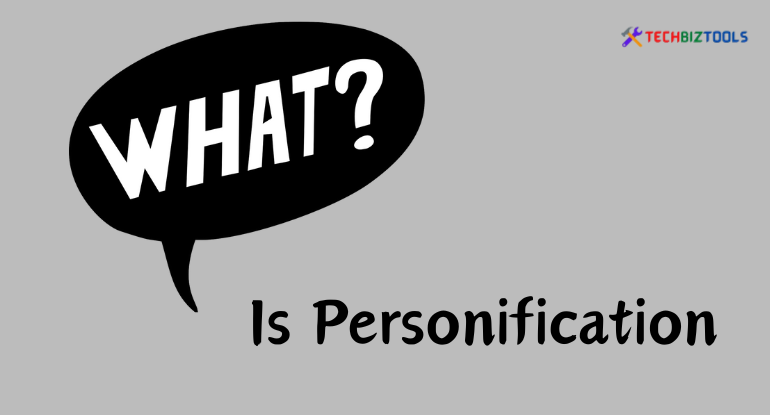
What Exactly is Personification? Examples and the Significance of Using Personification in Writing
Personification is a potent literary and creative writing technique that elevates prose above the ordinary. However, what is personification precisely, and why is it so important?
Come along on a trip to discover the definition, applications, and enormous storytelling power of personification. We will explore the ways in which this literary device gives life to inanimate objects and abstract notions through striking pictures and engaging stories.
Learn how personification enhances our comprehension and connection to the world around us, from the grandeur of Greek mythology to the minute nuances of everyday language.
Come along as we reveal the personification's mysteries and explore how it can revolutionize the writing world.
What is Personification?

Personification is a powerful literary method that imparts human features and characteristics to non-human creatures or objects. It works like a magic wand, giving life to things that would otherwise be lifeless and ordinary, such inanimate objects, animals, or abstract ideas.
The sharp distinctions between the living and the dead are softened by personification, luring readers into a world where both the physical and the intangible are alive and relatable.
This strategy makes even the most abstract ideas physical and approachable, which not only lends whimsy and fun to the story but also strengthens the reader's emotional connection.
Historical Background of Personification
Personification has been used in storytelling since the Neolithic Revolution, when people first started exchanging stories among themselves. Its goal has always been to anthropomorphize abstract ideas in order to give stories more resonance and power.
Personification was already a well-known literary trope in ancient Athens, where the first known examples of it may be found. Personification at that time frequently took the shape of goddesses such as the Roman goddess Victoria, who stood for victory. Personification was also widely accepted in ancient Roman literature.
Religious texts throughout history have also employed personification to convey complex ideas across different cultures. It serves as an allegorical language, using symbols to communicate deeper meanings. A notable example from more recent history is the concept of Bharat Mata, the personification of India as a goddess, which emerged in the nineteenth century and gained popularity during the independence movement.
Personification, however, is not limited to cultural and religious contexts. It manifests itself in a number of allegorical images, including Britannia, which represents the British Empire, Uncle Sam, who represents the United States, and the Merlion, which symbolizes Singapore's identity. These examples show how personification is still essential for forming group identities and delivering potent stories in various societies.
Personification of Concepts
At the outset of this discussion, it's essential to grasp that personification involves attributing human characteristics to non-human entities, including abstract ideas. Concrete nouns aren't necessary for personifying ideas; rather, it involves illuminating these concepts through abstract thoughts.
This practice has roots in ancient civilizations, where abstract concepts were personified as gods, as seen in Greek and Roman mythology. For instance, in Greek mythology, Eros personified the concept of love, while Venus played a similar role in Roman mythology.
Through such personifications, complex ideas become more accessible and relatable, fostering a deeper connection with the audience. This technique is prevalent in various literary works, often manifesting as mythological cycles.
Furthermore, within the Roman school of thought, the personification of abstract concepts serves as a fundamental principle. Roman ideas are intricately woven into their social fabric, reflecting a high level of self-awareness within their civilization.
While the exact evolution of these personified abstract thoughts remains elusive, it's evident that the Romans achieved a remarkable level of intellectual maturity. Numerous examples of personifying ideas abound in Roman philosophy and literature, showcasing the depth of their understanding.
Since then, the practice of personifying ideas has evolved and diversified, taking on new dimensions and nuances. Exploring these variations offers valuable insights into the versatility and adaptability of this literary device.
Examples of Personification
Literary Examples:
#1. William Wordsworth's "Daffodils": "Fluttering and dancing in the breeze."
Here, the daffodils are personified as capable of fluttering and dancing, imbuing them with a sense of vitality and movement.
#2. Emily Dickinson's "Because I could not stop for Death": "Death kindly stopped for me."
In this line, Death is personified as a courteous and considerate figure, adding a unique perspective to the concept of mortality.
#3. John Keats's "Ode to a Nightingale": "Thou wast not born for death, immortal Bird!"
Keats personifies the nightingale as immortal, highlighting its enduring significance and beauty.
Everyday Language Examples:
#1. "The Wind whispered secrets through the trees": Here, the wind is personified as capable of whispering secrets, evoking a sense of mystery and intimacy.
#2. "The Sun greeted the morning with a warm smile": This sentence personifies the sun, attributing it with the human-like action of greeting and smiling, creating a cheerful and welcoming image.
#3. "The River sings a soothing lullaby": By personifying the river as singing, the sentence adds a musical quality to the scene, enhancing its tranquil atmosphere.
What is Personification in Writing

Personification is a literary strategy used in literature to give non-human creatures or abstract notions human characteristics, thus bringing the story to life. This method draws the reader in and creates a lasting impression by adding depth and emotion to the content.
Writers can evoke strong feelings in the reader, spark their creativity, and enhance the overall effect of their work by anthropomorphizing concepts or objects.
Personification is a literary device that allows a writer to give ordinary objects life and give them human-like thoughts, feelings, and actions. By using this creative technique, authors can create vivid imagery that connects with readers on a visceral level, increasing the relatability and immersion of the story.
Personification also helps writers make abstract ideas concrete and approachable, which promotes comprehension and strengthens the bond between the writer and the reader. Through the humanization of abstract concepts like love, death, and nature, authors can arouse strong feelings and stimulate contemplative thought.
How to Use Personification in Your Written Works
Using personification effectively in your written works involves several key considerations:
#1. Choose Your Subjects Wisely: Begin by selecting objects or concepts that possess the potential to evoke emotions or convey a particular message. Opt for subjects that resonate with your intended audience and align with the themes of your writing.
For example, you might personify nature elements like the sun, moon, or wind to evoke feelings of tranquility or power.
#2. Use Descriptive Language: To breathe life into your personifications, employ vivid imagery and descriptive language. Paint a detailed picture for your readers by illustrating how these non-human entities behave, think, and feel.
By infusing your descriptions with sensory details, you can immerse your audience in the world of your narrative and make the personifications come alive.
#3. Consider the Tone: Tailor the tone of your personifications to match the overall mood and theme of your writing. Whether you're aiming for whimsical, solemn, or dramatic, ensure that the language and actions attributed to your personified entities align with the desired tone.
This cohesion enhances the coherence and impact of your writing, fostering a more immersive reading experience.
#4. Avoid Overuse: While personification can be a powerful literary device, using it sparingly is key to maintaining its effectiveness. Overloading your writing with excessive personifications can dilute their impact and overwhelm the reader.
Instead, strategically incorporate personification where it serves a purpose, enhancing the narrative without overshadowing other elements of your prose.
Personification in Writing: Its Effect and Importance
In writing, personification gives non-human objects life by giving them human characteristics and feelings. It has a tremendous effect, elevating the emotional resonance of stories and giving concrete form to abstract notions.
It engages readers on both an intellectual and emotional level by giving objects or concepts emotions and motivations, which promotes deeper connection and understanding. Moreover, it fosters originality and creative thinking in authors by stimulating their imaginations.
To put it simply, personification enhances writing by bringing the text to life, enhancing the dynamics of the narrative, and encouraging readers to engage with it on a deeper level
When Does Personification Become Necessary?
Personification becomes necessary in writing when there is a desire to imbue non-human entities or abstract concepts with human-like qualities and characteristics.
Here are some situations where the use of personification may be warranted:
#1. Creating Vivid Imagery: Personification can bring imagery to life by attributing human traits to objects or phenomena.
For example, describing the wind as "whispering secrets" paints a more vivid picture than simply stating that it's blowing gently.
#2. Enhancing Emotional Impact: By anthropomorphizing concepts, writers can evoke emotions more effectively.
For instance, describing the "cruel hands of time" makes the passage of time feel more oppressive and impactful.
#3. Making Abstract Concepts Tangible: Personification helps make abstract ideas more tangible and relatable to readers. For example, portraying love as a "gentle embrace" helps readers grasp it's comforting and nurturing qualities.
#4. Adding Depth to Characters: Characters in literature can be enriched by their interactions with personified elements of nature or objects.
For instance, a character's struggle against a "stubborn door" can reveal aspects of their personality and motivations.
#5. Creating Allegory and Symbolism: Personification is often used in allegorical storytelling to represent deeper themes or moral lessons.
For example, Aesop's fables frequently feature animals behaving like humans to convey moral messages.
#6. Engaging the Reader: Personification can captivate readers by presenting familiar objects or concepts in new and unexpected ways. It adds an element of surprise and intrigue to the narrative.
Conclusion
Personification is a potent literary strategy that gives non-human entities human characteristics, so bringing life to written works. We have seen how personification enhances storytelling by giving abstract notions a concrete form and increasing emotional resonance through illustrative instances and analysis of their relevance.
It encourages deeper knowledge and connection by involving readers on both an academic and emotional level. Its significance stems from its capacity to foster writers' creativity by promoting innovative expression and unique storytelling.
Personification ultimately elevates the craft of writing by enabling readers to engage with texts on a deeper level and creating an impression that persists even after the words have been read.